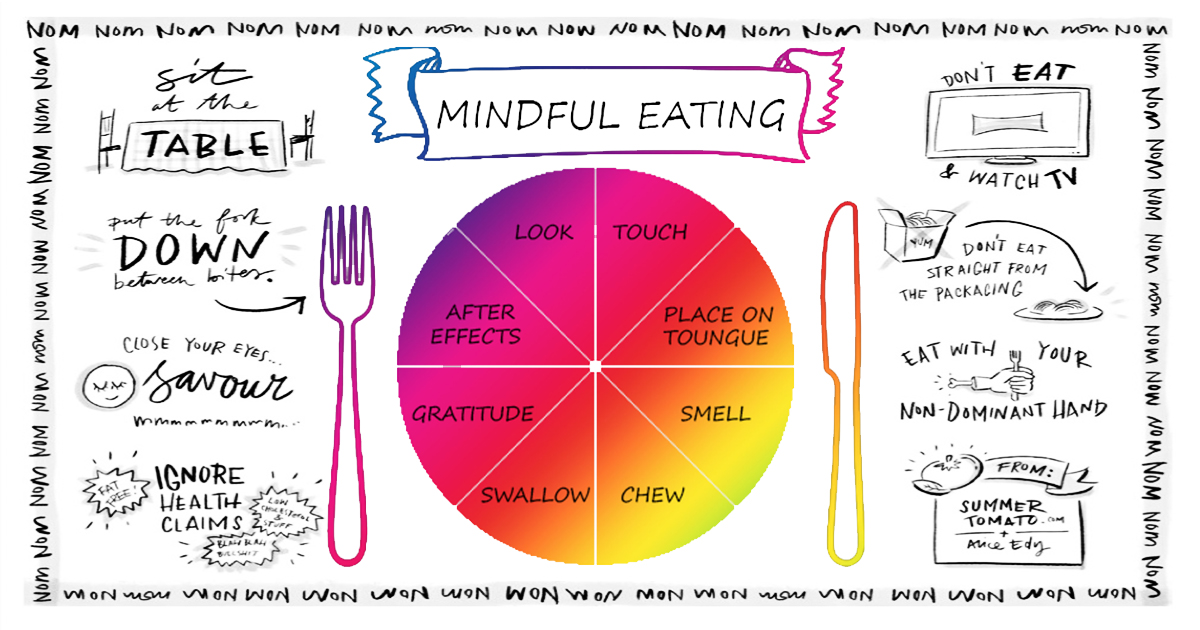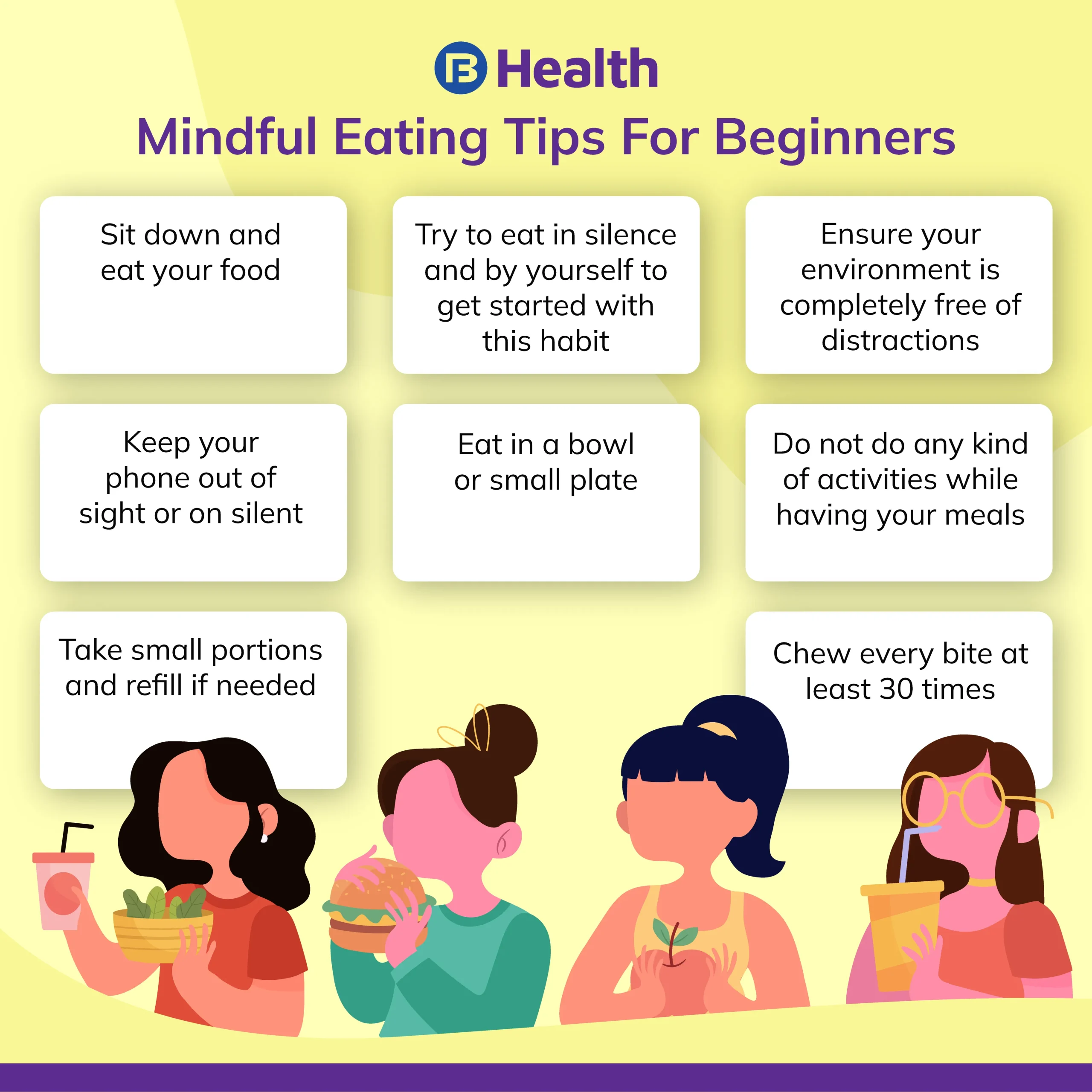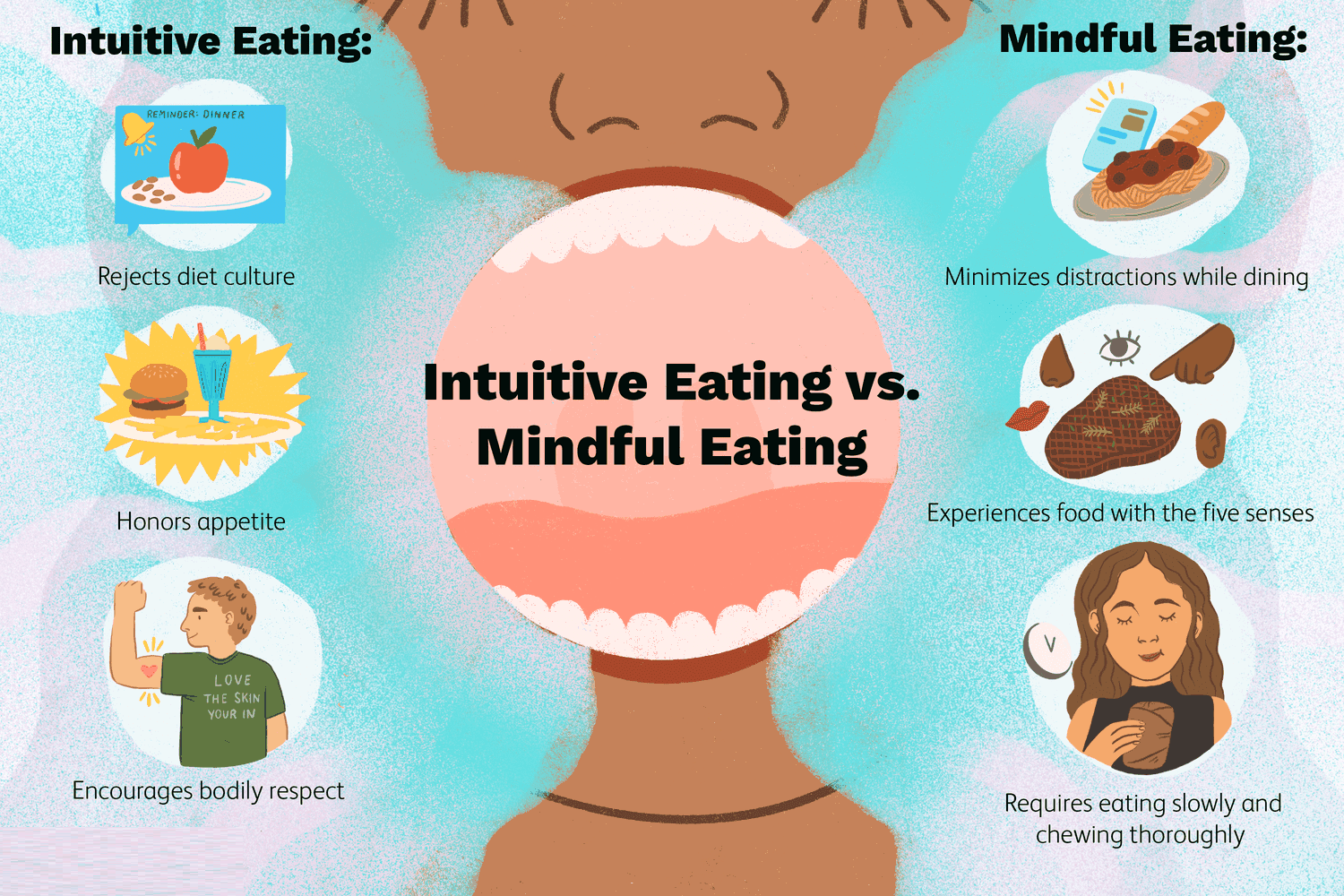Mindful eating exercise is a powerful approach that helps you develop a healthier relationship with food by bringing full awareness to the eating experience. Research shows that individuals who practice the core principles of mindful eating experience reduced emotional and binge eating behaviors, improved diet quality, and better long-term weight maintenance compared to traditional dieting approaches. These simple yet effective exercises engage all five senses, help you recognize genuine hunger cues, and create a more satisfying, conscious connection with food without restrictive rules or calorie counting.
What Is Mindful Eating Exercise?
At its core, a mindful eating exercise is the application of mindfulness meditation to the act of eating. It’s not a diet; it’s a form of awareness training. Unlike traditional dieting, which often imposes external rules about what or how much to eat, mindful eating turns your attention inward. It encourages you to listen to your body’s own wisdom.

Its roots trace back to Zen Buddhist teachings, but it has been adapted into modern therapeutic practices to address disordered eating patterns and improve overall well-being.
The core principles are simple yet profound:
- Paying Attention: Noticing the colors, smells, textures, and flavors of your food.
- Listening to Your Body: Recognizing physical hunger and fullness cues without judgment.
- Eating Without Distraction: Putting away your phone, turning off the TV, and focusing solely on your meal.
- Non-Judgmental Awareness: Acknowledging your feelings and food choices without labeling them as “good” or “bad.”
The Science Behind Mindful Eating
You might be wondering, “Does this actually work?” The scientific community has taken a keen interest in mindful eating, and the results are compelling. This isn’t just a wellness trend; it’s backed by solid research.
Studies have consistently shown significant benefits. For instance, a review of mindfulness-based interventions cited by Harvard Health found that they are effective in reducing binge eating and emotional eating. Participants in various studies have achieved modest but sustainable weight loss, often between 1.9 to 4 kg over 12 weeks, with one study showing an impressive 83% maintenance rate after 18 months—far surpassing the 42% for conventional diet groups.
The impact goes beyond weight. Research published by the National Institutes of Health (NIH) highlights a nearly 40% reduction in emotional eating episodes among participants. The practice also strengthens the gut-brain axis, the communication highway between your digestive system and your mind. By slowing down and reducing stress, you improve digestion and nutrient absorption, which can positively influence your mental health and what you choose to eat.
Benefits of Mindful Eating Exercises
The advantages of adopting this practice ripple through every aspect of your well-being. Let’s break them down.
- Physical Health Benefits: Better digestion is one of the first things people notice. Chewing thoroughly and eating slowly allows your digestive system to work efficiently, leading to less bloating and discomfort. It also supports natural weight management by giving your brain the time it needs to register fullness.
- Mental and Emotional Benefits: This is where mindful eating truly shines. It helps you untangle the knot of stress and food. By creating a pause between an emotion and a reaction, you can reduce stress eating and improve your body image. It fosters self-compassion, helping you let go of guilt and anxiety around food, which can dramatically improve your mood and well-being.
- Behavioral Benefits: You’ll become an expert on your own body. Recognizing the subtle differences between true hunger and a passing craving empowers you to make conscious food choices. This leads to reduced impulsive eating and greater satisfaction from your meals, even with smaller portions.
Core Mindful Eating Exercises for Beginners
Getting started is easier than you think. These foundational exercises are designed to build your awareness muscle one bite at a time.

The Raisin Exercise
This is the classic, foundational mindful eating exercise. It takes 5-10 minutes and can be done with a raisin, a piece of chocolate, or a slice of fruit.
- Observe: Hold the raisin in your palm. Really look at it. Notice its colors, the way light reflects off its surface, and its unique wrinkles.
- Explore: Close your eyes and feel its texture. Is it smooth, rough, soft, or firm? Notice its weight and temperature in your hand.
- Smell: Bring it to your nose and inhale deeply. What do you smell? Does the aroma trigger any memories or feelings?
- Place: Slowly bring the raisin to your lips and place it in your mouth, but don’t chew yet. Notice how your mouth responds. Feel its texture with your tongue.
- Bite: Take one single, conscious bite. Notice the burst of flavor and how it changes.
- Chew & Swallow: Chew slowly, paying attention to the sensations and sounds. When you’re ready, swallow and follow its path down to your stomach. Notice any lingering taste.
Five Senses Exercise
Expand the raisin exercise to an entire meal by systematically engaging all your senses.
- Sight: Before you eat, take a moment to appreciate the colors and arrangement on your plate.
- Smell: Inhale the aromas. How does the scent affect your appetite?
- Touch: Notice the temperature of the food and the weight of your utensils.
- Hearing: Listen to the sounds of chewing or the sizzle of your food.
- Taste: Finally, savor the flavors—sweet, salty, sour, bitter, and umami.
Mindful Breathing Before Meals
Before your first bite, pause and take 3-5 deep, cleansing breaths. Inhale through your nose, letting your belly expand, and exhale slowly through your mouth. This simple act activates your parasympathetic nervous system, also known as the “rest-and-digest” mode. It calms your mind, reduces stress, and allows you to check in with your actual hunger level.
The Hunger-Fullness Scale Exercise
Tune into your body’s signals with this simple scale from 1 to 10.
- 1: Ravenously hungry, weak, dizzy.
- 3-4: Pleasantly hungry, ready to eat. This is the ideal time to start a meal.
- 5: Neutral, neither hungry nor full.
- 6-7: Comfortably satisfied and content. This is the ideal time to stop.
- 10: Uncomfortably stuffed, physically ill.
Check in with yourself before, during, and after your meal. This helps you distinguish physical hunger (a gradual, physical sensation in your stomach) from emotional hunger (a sudden craving, often for a specific food). When you understand your body’s cues, you can better provide it with the right foods which give you energy when it truly needs it.
Step-by-Step Mindful Eating Practice
Ready to try it with a full meal? Here’s a simple, actionable guide.
- Preparation: Eliminate distractions. Turn off the TV, put your phone on silent and out of sight. Sit down at a table.
- Set the Scene: Create a calm, pleasant space. Use a real plate and utensils, not a container from the fridge.
- Ground Yourself: Before eating, take a few deep breaths. You might set a simple intention, like “I will nourish my body with this meal.”
- Eat Mindfully:
- Observe your food for a moment.
- Chew each bite slowly, aiming for 20-30 times.
- Put your fork or spoon down between bites.
- Pause halfway through the meal to check in with your Hunger-Fullness Scale.
- Reflect: After you finish, notice how you feel. Are you satisfied? Energized? Take a moment to appreciate the food that nourished you.
Mindful Eating Techniques for Emotional Eating
Emotional eating is a common challenge where we eat in response to feelings rather than physical hunger. Mindfulness is an incredibly effective tool to address this.

A helpful technique is HALT. When you feel a sudden craving, ask yourself: Am I truly Hungry? Or am I feeling Angry, Lonely, or Tired?
Another powerful method is the “pause and explore” technique. When a craving hits, don’t immediately act.
- Pause for three minutes.
- Breathe deeply.
- Explore the feeling. What emotion is present? Where do you feel it in your body? Ask yourself, “What do I really need right now?”
Sometimes the answer isn’t food. It might be a short walk, a glass of water, or a quick chat with a friend. Practicing this helps find better ways to cope with triggers and identify the right foods to relieve stress when nourishment is what you truly need.
How to Eat Slowly and Chew Mindfully
Our fast-paced world encourages fast eating, but your body is not designed for it. It takes about 20 minutes for your stomach to send fullness signals to your brain. Eating slowly gives your brain a chance to catch up, preventing overeating.
Here are some practical tips to slow down:
- Set down your utensils between each bite.
- Take a sip of water between bites.
- Try eating with your non-dominant hand.
- Set a timer for 20 minutes and make your meal last that long.
- Aim to chew each bite 20-30 times until it’s nearly liquefied. This not only slows you down but also drastically improves digestion and nutrient absorption.
Creating a Mindful Eating Environment
Your surroundings have a massive impact on your eating awareness. To set yourself up for success, focus on creating a supportive environment.
- Eliminate Distractions: Make your meal a “no-screen zone.” This is the single most important change you can make.
- Use Proper Settings: Sit at a table, not on the couch. Use a plate, not the package the food came in.
- Mindful Conversation: If eating with others, try to steer the conversation toward present, positive topics rather than stressful ones.
- Create a Ritual: Start your meal with a moment of gratitude. This simple act signals to your brain that it’s time to focus on eating.
Mindful Eating vs. Intuitive Eating
People often use these terms interchangeably, but they are slightly different concepts that complement each other beautifully.
- Mindful Eating is the how of eating. It’s the practice of being fully present with your food and body during the meal itself.
- Intuitive Eating is a broader philosophy with 10 core principles. It’s about rejecting the diet mentality, honoring your hunger, making peace with all foods, and respecting your body’s signals throughout the entire day, not just at mealtimes.
Think of it this way: mindful eating is a key tool you can use to practice intuitive eating successfully.
Common Challenges and Solutions
Starting a new practice always comes with a few hurdles. Here’s how to navigate them.
- Challenge: “I don’t have time for this!”
- Solution: You don’t have to be mindful for every meal. Start with just one snack a day or the first three bites of your dinner. Small steps build momentum.
- Challenge: “My mind keeps wandering.”
- Solution: That’s completely normal! The goal isn’t to have a perfectly empty mind. It’s to gently guide your attention back to the food each time it wanders, without judgment.
- Challenge: “It’s awkward in social situations.”
- Solution: You don’t have to close your eyes and meditate over your food at a restaurant. Simply try to put your fork down between bites, chew thoroughly, and occasionally check in with your fullness level.
Remember, this is a practice, not perfection. Be kind to yourself.
Integrating Mindful Eating Into Daily Life
The key to long-term success is making mindful eating a sustainable part of your lifestyle, not another chore on your to-do list.

- Start Small: Choose one meal a week to be your “mindful meal.”
- Build Gradually: As you get more comfortable, add more mindful moments to your day. Maybe it’s your morning coffee or an afternoon snack.
- Adapt to Your Life: You can practice mindful eating anywhere—at your desk, in a restaurant, or on a plane. The principles of paying attention and listening to your body are universal.
- Combine Practices: Mindful eating is often more effective when paired with other mindfulness exercises, like a 5-minute morning meditation or a mindful walk.
Conclusion
Mindful eating exercises offer a compassionate, sustainable, and science-backed path to transforming your relationship with food. By shifting your focus from restrictive rules to internal awareness, you empower yourself to nourish your body, honor its signals, and find genuine joy and satisfaction in eating. It’s a journey of rediscovery, one conscious bite at a time.
Here at www.notonetype.org, we believe that true wellness comes from building a kind and attentive relationship with yourself. We encourage you to explore these practices and discover the profound peace they can bring.


You may also like this
Best Breakfast Foods for Energy: 14 Options for All-Day Fuel
Why Breakfast Matters for Energy Levels After a night of rest, your body has been...
Nov
Foods Which Give You Energy: 27 Natural Energy Boosters to Power Your Day
We’ve all been there: that 3 PM slump when your focus fades and your eyelids...
Nov
Foods That Cause Stress: 8 Stress-Inducing Foods to Avoid
While many of us reach for “comfort foods” during tough times, you might be surprised...
Nov
18 Foods to Relieve Stress: Science-Backed Natural Solutions
Stress is a universal experience, but the way it shows up in our daily lives...
Nov
Foods That Improve Mood: 12 Science-Backed Options for Mental Health
Ever notice how a tough day can feel just a little bit better after a...
Nov
Mindful Eating: A Complete Guide to Transform Your Relationship With Food
Mindful eating is the practice of bringing full attention to the experience of eating—to the...
Nov